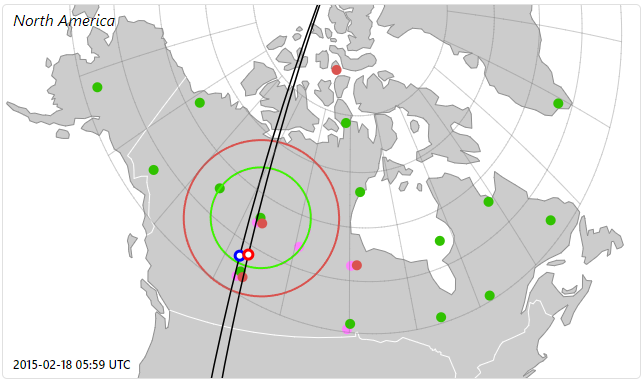What are Conjunctions?¶
The most simplistic definition of a conjunction is a time when two things are close to each other. For AuroraX, we further define it as when the magnetic footprints of two data sources are within a certain distance for a given minute.
The set of data sources can be ground-based instrumentation, spacecrafts, or instruments operating onboard certain spacecrafts. We can easily illustrate this using a screenshot from the Swarm-Aurora Conjunction Browser, seen below. This is an example of a conjunction where the magnetic footprints of two spacecrafts - Swarm A and Swarm C in this case - passed through the field of view (FoV) of several ASIs in Fort Smith, NWT, Canada (which were collecting data at the time).

A differentiating factor of AuroraX "conjunction" searching from other systems available (ie. NASA's SSCWeb) is that the AuroraX database only contains data for when instruments collected data. This removes all the possibilities where the spacecraft could have passed through the FoV, but, the ASI didn't collect any data. The key benefit of this data architecture is that "event discovery" processes are much faster and significantly less labour-intensive.
Next step¶
Next, we'll explore performing conjunction searches using AuroraX.